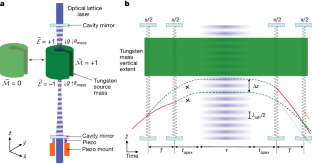2024-06-25 カリフォルニア大学サンタバーバラ校(UCSB)
<関連情報>
- https://news.ucsb.edu/2024/021531/shocked-quartz-reveals-evidence-historical-cosmic-airburst
- https://www.scienceopen.com/hosted-document?doi=10.14293/ACI.2024.0003
白金、衝撃破砕石英、微小球、融解ガラスは、若年の乾燥期開始時(12.8 ka)にアメリカ東部に広く分布していた Platinum, shock-fractured quartz, microspherules, and meltglass widely distributed in Eastern USA at the Younger Dryas onset (12.8 ka)
Christopher R. Moore , Malcolm A. LeCompte , James P. Kennett , Mark J. Brooks , Richard B. Firestone , Andrew H. Ivester , Terry A. Ferguson , Chad S. Lane , Kimberly A. Duernberger , James K. Feathers , Charles B. Mooney , Victor Adedeji , Dale Batchelor , Michael Salmon , Kurt A. Langworthy , Joshua J. Razink , Valerie Brogden , Brian van Devener , Jesus Paulo Perez , Randy Polson , Michael Martínez-Colón , Barrett N. Rock , Marc D. Young , Gunther Kletetschka , Ted E. Bunch , Allen West
Airbursts and Cratering Impacts Published:08 May 2024
DOI: 10.14293/ACI.2024.0003

Abstract
Sediment sequences spanning the 12,800-year-old lower Younger Dryas boundary (YDB) were investigated at three widely separated sites in eastern North America (Parsons Island, Maryland, a Newtonville sandpit in southern New Jersey, and Flamingo Bay, South Carolina). All sequences examined exhibit peak abundances in platinum (Pt), microspherules, and meltglass representing the YDB cosmic impact layer resulting from the airbursts/impacts of a fragmented comet ∼12,800 years ago. The evidence is consistent with the Younger Dryas impact hypothesis (YDIH) recorded at ∼50 other sites across North and South America, Europe, Asia, and the Greenland ice sheet. These sequences were also examined for shock-fractured quartz, based on a recent study suggesting that low-shock metamorphism may result from low-altitude bolide airbursts similar to that observed during near-surface atomic detonations. Now, for the first time in a suite of well-separated sites in North America, we report in the YDB the presence of quartz grains exhibiting shock fractures containing amorphous silica. We also find in the YDB high-temperature melted chromferide, zircon, quartz, titanomagnetite, ulvöspinel, magnetite, native iron, and PGEs with equilibrium melting points (∼1,250° to 3,053°C) that rule out anthropogenic origins for YDB microspherules. The collective evidence meets the criteria for classification as an “impact spherule datum.”



